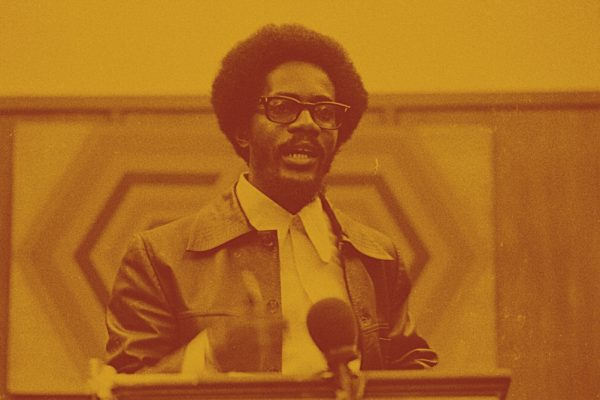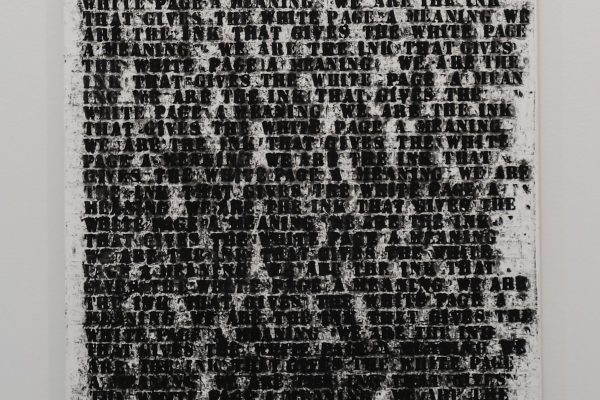The Triple Package: How Three Unlikely Traits Explain the Rise and Fall of Cultural Groups in America
Amy Chua and Jed Rubenfeld
Penguin, $27.95
The tiger couple is chasing its own tail, which is to say, they are stuck in circular reasoning. In their new book, The Triple Package, Amy Chua, author of the best-selling Battle Hymn of the Tiger Mother, and Jed Rubenfeld tackle the question of why certain groups are over-represented in the pantheon of success. They postulate the reason for their success is that these groups are endowed with “the triple package”: a superiority complex, a sense of insecurity, and impulse control. The skeptic asks, “How do we know that?” To which they respond: “They’re successful, aren’t they?”
But Chua and Rubenfeld proffer no facts to show that their exemplars of ethnic success—Jewish Nobel Prize winners, Mormon business magnates, Cuban exiles, Indian and Chinese super-achievers—actually possess this triple package. Or that possessing these traits is what explains their disproportionate success. For that matter, they do not demonstrate that possessing the triple package is connected, through the mystical cord of history, to Jewish sages, Confucian precepts, or Mormon dogma. Perhaps, as critics of Max Weber’s The Protestant Ethic and the Spirit of Capitalism have contended, success came first and only later was wrapped in the cloth of religion. In other words, like elites throughout history, Chua and Rubenfeld’s exemplars enshroud their success in whatever system of cultural tropes was available, whether in the Talmud, Confucianism, Mormonism, or the idolatry of White Supremacy. The common thread that runs through these myths of success is that they provide indispensable legitimacy for social class hierarchy.
Chua and Rubenfeld give us old wine in new bottles: they invoke the idea used the world over to justify entrenched systems of social stratification—that success comes to the culturally deserving. This was precisely the argument put forward by Thomas Sowell in his 1981 book Ethnic America. For Sowell, “Jews are the classic American success story—from rags to riches against all opposition.” For Chua and Rubenfeld, “the two million Eastern European Jews who immigrated to America in the early 1990s brought with them habits of heightened discipline, religious prohibition, and hard work that they not only practiced themselves but passed down to their children.” Furthermore, both books contrast Jewish success in overcoming persecution and poverty with a deeply ingrained “defeatism” among blacks who bear the scars of centuries of slavery and denigration. As Sowell writes:
Groups today plagued by absenteeism, tardiness, and a need for constant supervision at work or in school are typically descendants of people with the same habits a century or more ago. The cultural inheritance can be more important than biological inheritance, although the latter stirs more controversy.
There you have it: the problem is to be found, not in the genes, but rather in the cultural DNA, which is even “more important than biological inheritance.” Since 1981, however, anthropologists and sociologists have developed a large canon of work that dissects and discredits theories that reduce inequality to culture. This scholarship was reflected during their book tour when Chua and Rubenfeld were challenged with questions about the racist implications of their theory. Is their point that African Americans are culturally deficient? Are they using “culture” to blame the victim, and to deflect attention away from persistent racist barriers that limit opportunity? For that matter, what about the 99 percent of people in “successful groups” who do not reach the top 1 percent? Are they less Jewish, Asian, Cuban, Mormon than Jews, Asians, Cubans, and Mormons who have “made it”? Do they suffer from a paucity of the traits that make up the triple package?
Chua and Rubenfeld invoke an idea that justifies entrenched systems of social stratification: that success comes to the culturally deserving.
If not culture, what does explain Jewish “success against all opposition?” As I argue in The Ethnic Myth (1981), Jewish success is chiefly the result of factors that go back to the condition of Jews in their countries of origin. The shtetls romanticized in Fiddler on the Roof were small towns, proximate to cities, where Jews carved out niches between rural and urban economies. Many were traders who purchased agricultural products, animal hides, and raw materials from peasants and sold them to factories in cities, eking out a small profit. By the end of the nineteenth century, there were large concentrations of Jews in cities, and they played a key role in the critical early phases of industrialization. A 1945 survey of “Jews in the Russian Economy,” assembled by a group of Russian-Jewish immigrants, reported the following:
By 1832 Jews owned 149 [textile] factories and plants out of the total 528 existing at the time in eight provinces. . . . From the 1870s until the First World War, the Jews played a major part in the development of the sugar industry. . . . Flour milling was quite widespread among Jews within the Pale of Settlement. . . . By the early years of the twentieth century Jews owned or leased 365 mills with an annual business of 20 million rubles. . . . The same can be said of tobacco production, which had long been concentrated in Jewish hands. . . . In the Russian leather industry Jews also played a substantial role. . . . In the woodworking industry, Jews were prominent chiefly in the sawmill business. . . . In the grain and timber trade, Jews . . . may be said to have brought Russia into the world market.
In short, Jews were on the forefront of commerce and industrialization in Eastern Europe, and Jewish immigrants to the United States arrived with previous industrial experience and a higher rate of literacy that gave them a decisive head start over other immigrants, most of whom came from peasant origins.
Jewish immigrants also had skills in a wide array of crafts. A study conducted by the U.S. Immigration Commission in 1911 found that Jews ranked first in thirty-six of forty-seven trades:
They constituted 80 percent of the hat and cap makers, 75 percent of the furriers, 68 percent of the tailors and bookbinders, 60 percent of the watchmakers and milliners, and 55 percent of the cigarmakers and tinsmiths. They totaled 30 to 50 percent of the immigrant classified as tanners, turners, undergarment makers, jewelers, painters, glaziers, dressmakers, photographers, saddlemakers, locksmiths, and metal workers in other than iron and steel. They ranked first among immigrant printers, bakers, carpenters, cigar-packer, blacksmiths, and building trades workmen.
These skills were in demand in the burgeoning economies of the cities where they settled. Many Jewish immigrants used their craft skills to establish small family businesses that allowed them to secure an occupational and economic foothold that served as a springboard of mobility for their children. Typically their sons went into the family business, and at the point that their grandchildren began streaming into college, there was a fortuitous expansion of American higher education, especially during the period after World War II. In a nutshell, Jews were the right people in the right place and the right time, and this is why they were able to escape the poverty of the immigrant generation more rapidly than others.
None of this is to say that culture does not matter. The whole point is that culture does not exist in a vacuum, but rather is one factor within a large matrix of social and material factors. As I write in The Ethnic Myth:
If Jews set high goals, it is because they had a realistic chance of achieving them. If they worked hard, it is because they could see the fruits of their labor. If they were willing to forgo the pleasures of the moment, it is because they could realistically plan for the future, for their children if not for themselves. In short there was much in the everyday experience of Jewish immigrants to activate and sustain their highest aspirations. Without this reinforcement, their values would have been scaled down accordingly, and more successful outsiders would today be speculating about how much further Jews might have gone if only they had aimed higher.
The fatal flaw of The Triple Package is that its authors treat their magic trifecta as disembodied values, putatively rooted in ancient cultures. But they provide no evidence that their exemplars are actually immersed in these cultural systems. Rather, there are more mundane reasons why they might exhibit the magic trifecta, connected with their social class and circumstances. Chua’s parents were not just struggling immigrants—they were educated professionals with the social and material resources that allowed them to sustain their aspirations for their children. Rubenfeld was raised in upper–middle class affluence, which put him on a fast track to success. Their circumstances positioned the tiger parents to raise two achieving daughters, one bound for the Harvard (their parents’ alma mater), the other for Yale (their parents’ workshop). In other words, mobility is not an individual achievement so much as it is a family project that occurs incrementally across generations.
The demystification of the Jewish success story has implications for rendering a more truthful account of the success stories at the center of Chua and Rubenfeld’s book. In each case, pre-migration factors and selective migration go a long way to explaining group success:
- Nigerian immigrants at Harvard Business School are no success story whatsoever. They come from Nigeria’s educated and affluent elite. If anything, this is a case of a transfer of human capital from one nation to another. Or, to put it bluntly, a brain drain. The same is true of many Iranian and Lebanese immigrants.
- A socialist revolution made refugees of Cuba’s political oligarchs and economic elites and sent them in flight to Miami. Recovery was not easy, but neither were they the “huddled masses” of yore. Cuban refugees received loans from the Small Business Administration whose purpose was to showcase the superiority of American capitalism over Cuban socialism. In contrast the Cubans who arrived in the 1980 “Mariel Boatlift” came from the poorest segments of the Cuban population. Unlike in 1966, there were no articles in Fortune Magazine entitled “Those Amazing Cuban Émigrés.”
- The first wave of Asian immigrants after the 1965 Immigration Act consisted mostly of professionals who sought more lucrative employment in the United States. Later these immigrants were able to send for their poorer relatives under the family reunification provision in immigration law. Like Jews, many Asians found a niche in the enclave economy and used their success as entrepreneurs as a springboard of mobility for their children.
- Chua and Rubenfeld have a field day with the statistic that Asians comprise nearly three quarters of the students at Stuyvesant, New York City’s elite high school. They claim that many of these students come from parents who are restaurant or factory workers, but they have no evidence on the actual class background of students who make the cut for Stuyvesant. Their source is a single local news story about a school in Sunset Park, Brooklyn, where children, at great expense to their working-class parents, are enrolled for years in a test-prep program called “Horizons.” Nor is there mention of the cottage industry of test-prep programs in Chinatown, which are now cashing in by attracting non-Asians as well.
- The droves of foreign students in the nation’s colleges and universities who overstay their visas are another source of immigrant achievers. These students come mostly from middle-class or affluent families who can afford to enroll their children in American universities. Again, a case of selective migration, not a success story.
- As for the Caribbean students who succeed, whether in college admissions or in business, they rarely come from affluent families, but they still have class advantages that place them a rung higher on the ladder than African Americans, and they encounter less racism as a result. On the other hand, the Jamaican seasonal farm workers who harvest apples in upstate New York are no success story.
- Why Mormons, regarded fifty years ago as a fringe group, have made recent strides in the business world is unclear, but one thing is certain: Mormon religion did not change. On the contrary, as was true of immigrant Jews, the Mormons who were catapulted to success probably had to break away from the strictures and doctrines of pre-modern religions in order to achieve the success they sought in the material world. Sure, like Mitt Romney and like the protagonist in Abraham Cahan’s 1917 novel, The Rise of David Levinsky—they look back nostalgically on their youthful allegiances, but the discontinuities are far more important than the continuities.
When the tiger couple appeared on Fareed Zakaria’s weekly show on CNN, Zakaria observed that the nations that supposedly embody the magic trifecta have, until recently, been “basket cases.” Without a moment’s hesitation, Rubenfeld averred that in their home countries, they had only two of the three requisite traits—an ingrained sense of superiority and impulse control. Only when they arrived on American shores did they develop the sense of vulnerability that allowed the trifecta to have its magical result. These are the absurd lengths that Rubenfeld must go to in order to save his pet theory from its glaring overstatements and fatal omissions.
It is worth asking how such a flawed book became a sensation. Its launch was built on the ballyhoo of Chua’s previous best-seller, Battle Hymn of the Tiger Mother, published two years earlier. But, beyond that, the press has been giving the book extraordinary attention. The couple published an opinion piece in the Sunday Review section of the New York Times, on January 26, nine days before The Triple Package was published. The next week the Times Magazine ran a feature article by Jennifer Szalai, “Confessions of a Tiger Couple.”
We learn that Chua was born in Illinois, the daughter of Chinese parents from the Philippines. Not much there to connect her with the Ming Dynasty, much less contemporary Chinese culture. Nor was she of humble origins. Her father was a doctoral student in electrical engineering and her mother was trained as a chemist but gave up her career to raise her four daughters. True, Chua’s parents had high expectations for their daughters’ success, but what is special about that? They also had the education and the capital to sustain and finance their aspirations for their children. Rubenfeld’s family roots were entirely different. His father, a successful psychotherapist, and his mother, an art critic, had both revolted against the Jewish orthodoxy of their youth. Thus Jed was raised not in Talmudic scholasticism but in the permissive dogma of Benjamin Spock, free to find his own path in life. Yet for all their childhood differences, Chua and Rubenfeld converged on the same path of success as law students at Harvard, met at a volleyball game, and, long story short, they married and wound up tenured law professors at Yale.
“Confessions of a Tiger Couple” also reveals that the professional accomplishments of these two Yale law professors are meager. Both veered away from law into what Szalai calls “Gladwellian sociology.” Rubenfeld penned two Freudian thrillers, one of which was a best-seller in England. Chua struck oil with her paean to boot-camp childrearing. One wonders whether the book would have been relinquished to the self-help section of book stores if not for her artful invocation of the “Tiger Mother,” a trope that is pregnant with racist and sexist fantasies.
Then, for the third time in two weeks, manna from the New York Times fell on The Triple Package, this time in the form of a front-page review in the Sunday Book Review. Sandra Tsing Loh, author of Mother on Fire: A True Motherf%#$@ Story About Parenting (2008), wrote a sardonic review, concluding that The Triple Package is “a dull but probably lucrative book.” Indeed, two weeks later it made its debut in ninth place on the New York Times best-seller list, abetted by a grueling two-week book tour that included a flurry of interviews on major radio and television shows. However, no sooner did the media blitz end than The Triple Package disappeared from the best-seller list, leaving us to wonder whether this was a success story or a marketing feat, playing on the tiger mother’s notoriety and the magic of their three agents.
In their whirlwind interviews, Chua and Rubenfeld were often asked whether their theory has a racist flipside, and their prompt riposte was that blacks, too, could achieve success if only they cultivated the magic trifecta. It is worth pointing out, though, that most of the groups that Chua and Rubenfeld tout as exemplars of success would not be on American soil but for the 1965 Immigration Act that was passed on the heels of the Civil Rights Movement. Not only that, but thanks to the black protest movement, immigrants from Asia, Africa, and Latin America entered a nation with a far more favorable climate of tolerance than existed in times past. Finally, it is safe to assume that some of Chua and Rubenfeld’s exemplars reaped the advantage of affirmative action programs, which were developed in the cauldron of black protest and gutted by the Supreme Court.
There is bitter irony when the paragons in Chua and Rubenfeld’s narrative are used to make invidious comparisons to African Americans who, throughout American history, have been pushed further back from doors of opportunity by successive waves of immigrants. As Toni Morrison wrote twenty years ago, their success comes “on the back of blacks,” whose struggles are similarly eclipsed in this facile and fallacious book.








